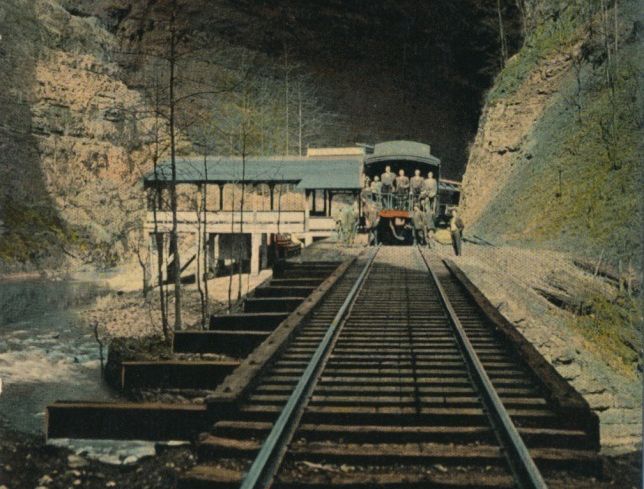In 1989, Samuel K. Skinner, Secretary of Transportation under George H. W. Bush, proclaimed in a committee hearing that, “infrastructure is not sexy – it doesn’t sell, it doesn’t go to the front page,” a sentiment that has been repeatedly quoted by news commentators ever since.
Although infrastructure might not be eye-catching enough to be sold easily in political campaign ads, it is nevertheless fascinating. It is a necessary part of how we as a country function every day and it is a testament to the labor of many generations, past and present, who have contributed exhaustive amounts of labor to both build and maintain our highways, bridges, waterways, and tunnels. More than a few have given their very lives.
Scott Reynolds Nelson’s Steel Drivin’ Man is a reminder of not only how much physical labor, but also mental and emotional work go into connecting the different regions of this country. Whether or not Nelson has pinpointed the historical John Henry, the story he tells of one man’s forced labor on the Chesapeake & Ohio Railway and the legacy of the John Henry legend remind us of how many have been sacrificed for our current comfort.

VIRGINIA IN BLACK AND WHITE. Washington: Passenger Dept. Chesapeake & Ohio Railway, 1893.
The following are just five of the railroad tunnels in Virginia.
Lewis Tunnel
Scott Reynolds Nelson argues that the man who inspired the John Henry legend probably worked on Lewis Tunnel, a 4,300-foot railroad tunnel cutting through Lewis Mountain. Completed in 1873, the Lewis Tunnel was the work of hundreds of forced laborers from the Richmond Penitentiary. The use of the steam drills may or may not have made the work easier but it almost certainly contributed to the ill health of the workers as it spewed out micro-particles that settled in the worker’s lungs.
Blue Ridge Tunnel
One of a set of four railroad tunnels to first pierce through the Blue Ridge Mountains in Virginia, the Blue Ridge Tunnel opened to rail traffic in 1858, conceived by the French engineer Claudius Crozet (namesake of the nearby town of Crozet, Virginia). At the time it was the longest tunnel in the United States, but its construction came at the cost of over 150 lives, many of them Irish immigrants and enslaved workers. A newer railroad tunnel was built alongside it in the 1940s. The original Blue Ridge Tunnel opened last year to pedestrian traffic.
Natural Tunnel
Although the star of many a picture postcard, the Natural Tunnel in Duffield gets less press than Virginia’s Natural Bridge. As its name suggests, it was formed naturally out of limestone over thousands of years. It was also convenient for the Southern Atlantic and Ohio Railroad to exploit as an easy passageway through Purchase Ridge. It is still in use as a railroad tunnel, but is also a state park.

Natural Tunnel
Library of Virginia Postcard Collection
Church Hill Tunnel
Church Hill Tunnel in downtown Richmond is a prime example of how dangerous these tunnels could be, even long after their initial construction. Completed in the 1870s along with many other Chesapeake & Ohio Railroad tunnels, the Church Hill Tunnel collapsed in 1925 while an engine and ten train cars were inside, killing several men. A further collapse stopped rescue initiatives and the tunnel was sealed off.
Big Bull Tunnel
Many abandoned tunnels have ghost stories attached to them, it is not much of a surprise given their dark, foreboding presence and the very real dangers associated with them. It is also no big surprise that the phrase “seeing the light at the end of a tunnel” refers to seeing hope at the end of a dark or stressful period. Big Bull Tunnel in Wise County has a long history of such tales as well as horrendous deaths. In July 1905, numerous Virginia newspapers reported that railroad men claimed to hear a voice coming from the solid rock begging them to “remove that awful weight from my body,” followed by the exclamation, “They are drinking my blood!”
Join us virtually at 6 p.m. on Tuesday, December 21, to discuss Scott Reynolds Nelson’s book Steel Drivin’ Man. Registration is free but required.
-Jessi Bennett, Digital Collections Specialist, and Becky Schneider, Senior Reference Librarian
Recommended Resources
John Henry
Websites
- Excavating the Past (Style Weekly)
- John Henry Ballad (Library of Congress)
- On the Trail of the Real John Henry: John Garst, with response by Scott Nelson (History News Network)
- Was John Henry a Real Person? (Ballad of John Henry Documentary)
Books
- Chappell, Louis Watson. John Henry: A Folk-Lore Study. Port Washington, N.Y: Kennikat Press, 1968.
- Johnson, Guy Benton. John Henry: Tracking down a Negro Legend. Chapel Hill: University of North Carolina Press, 1929.
- Polenberg, Richard. Hear My Sad Story? The True Tales That Inspired “Stagolee,” “John Henry,” and Other Traditional American Folk Songs. Ithaca: Cornell University Press, 2015.
Rail History
Library of Virginia Collections
- Board of Public Works Maps
- Research Guide: The Internal Improvement Movement in Virginia
- Photograph: Bust of Collis P. Huntington by Anna Hyatt Huntington
Books
- Nelson, Scott Reynolds. Iron Confederacies: Southern Railways, Klan Violence, and Reconstruction. Chapel Hill: University of North Carolina Press, 1999.
Virginia State Pentientiary
Library of Virginia Collections
- Postcard of State Penitentiary, Richmond, Va.
- Real Estate Brochure: Prime Real Estate Sale, 16 Acres in Downtown Richmond, VA. Deadline: November 17, 1987.
- Virginia State Penitentiary: Proposed Plans, Elevations, and Perspective Drawings, Benjamin Henry Latrobe (1797)
Books
- Brumfield, Dale M., and Evans D. Hopkins. Virginia State Penitentiary? A Notorious History. Charleston, SC: History Press, 2017.
- Mancini, Matthew J. One Dies, Get Another? Convict Leasing in the American South, 1866-1928. Columbia, S.C: University of South Carolina Press, 1996.









